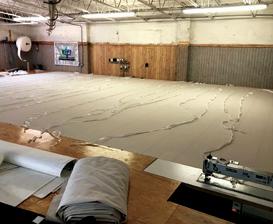
5 minute read
KEEP CRAFT AFLOAT
from Raven Issue No. 33
ARTISAN SAILMAKERS BREATHE NEW LIFE INTO AN OLD SHIP
Just over 400 years ago, the Mayflower merchant ship sailed across the Atlantic from Plymouth, England, to the New World, carrying 102 passengers hoping to start a new life. After two reportedly stormy, miserable and seasick months at sea, the travelers arrived, but they were not where they meant to be. The ship was approved to settle in what is now Virginia, but in an era without GPS mapping, they landed instead in what later became known as Plymouth, Massachusetts.
Advertisement
The travelers spent their first winter living on board the ship where roughly half of the passengers and crew died of disease and cold. When the Mayflower sailed back to England in the spring, the passengers moved ashore. The next winter claimed half of the remaining colonists. Indigenous people helped the rest survive, teaching the colonists about local fauna and flora.
While most Americans are familiar with the story of the Mayflower — or versions of it containing various storytelling embellishments — there are some interested in the one particular part of the story: the ship and its sails.
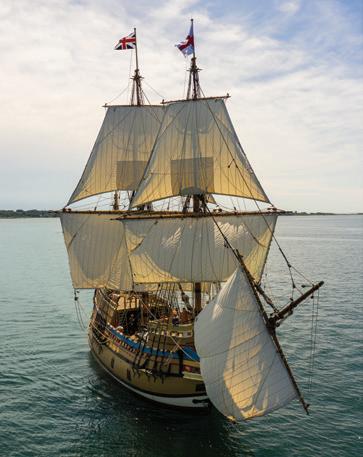
As a gift to honor the friendship between the countries established during World War II, the United Kingdom gifted a fullscale reproduction of the Mayflower ship, sailed by a crew of 33 men from England to Massachusetts in 1957. After more than a half century as a tourist destination with an estimated 25 million visitors, the Mayflower II retired to the Mystic Seaport Museum’s Henry B. duPont Preservation Shipyard from 2016 through September 2020 for a full historic restoration, as it’s now a historic landmark of its own merit. During the restoration, roughly 75% of the ship was replaced, including the sails. The ship debuted fully restored in 2020.
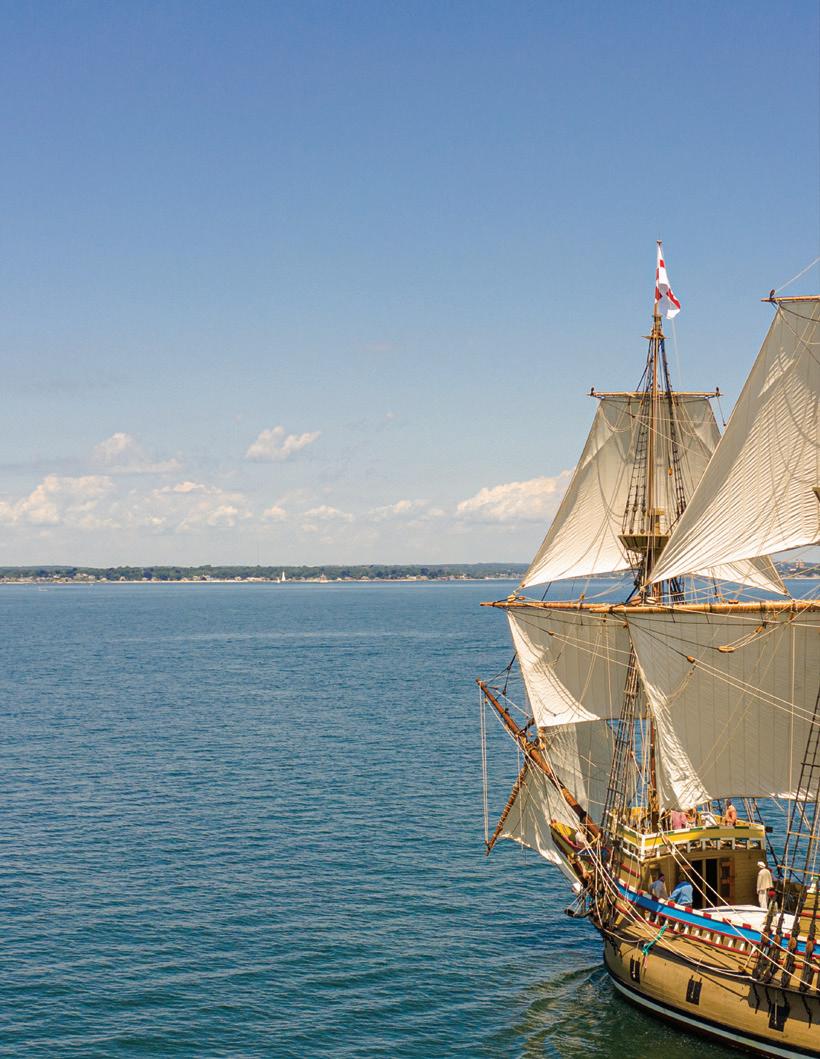
As engines power large modern-day ships, sails are now more commonly reserved for leisure, sport and historic replicas. While sport sails are more common, there are artisan craftspeople who keep traditional maritime craft alive. Two such sail lofts were commissioned to build the sails for this project using Glen Raven’s Oceanus, a performance-oriented technical fabric developed by industry experts in the late 1990s for the USS Constitution restoration. Oceanus is distributed by Contender Sailcloth, a company that dominates the tall ship and restoration market.
Operating in the U.S. and worldwide, Contender Sailcloth was founded 30 years ago and sustains a reputation for its expertise and customer service.
“Modern sailcloths are some of the tightest woven textiles on the planet,” said Tom Evans, a lifelong avid sailor and member of the Contender Sailcloth sales team.
“The Oceanus has a unique construction that uses a relatively looser weave in conjunction with specially designed yarns. This design allows Oceanus to mimic the performance and feel of the sailcloth that tall ships used long ago. Those original sails were composed of cloth made with natural fibers like cotton or flax. With Oceanus, the cloth behaves and feels like a natural fiber cloth, but it’s also extremely durable and has a long working life because we use modern yarn. It’s a very niche cloth in a niche market for the textile industry. We’re the only ones who offer it.”
In 2005, Glen Raven took over production of the greige from the initial manufacturer. Glen Raven added design improvements to the cloth construction over the years, moving from dying the greige in the finishing process to using solution-dyed yarns during weaving to ensure consistent color shade. According to Evans, everyone in their industry knows Oceanus, which boasts the natural canvas look of a traditional sail with high durability and performance of a modern one.
Mayflower II sailmaker Dayle Ward was first introduced to sailing when her father signed her up for a summer aboard the US Brig Niagara, a replica ship from the War of 1812, after seeing a magazine advertisement for volunteers from their home in landlocked Colorado. An artsy kid who said she never felt at home behind a school desk, the hands-on, experiential learning was an instant match for Ward.
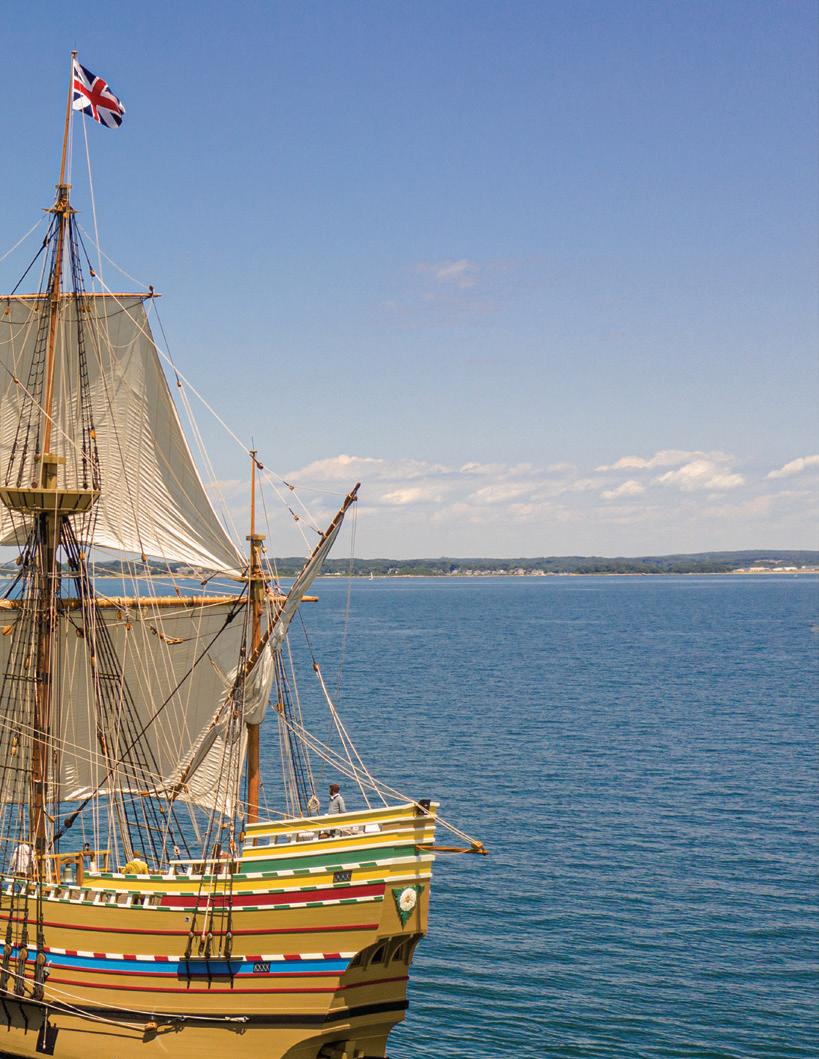
“It felt more real than anything I had experienced,” Ward said of her first summer sailing. “I was expected to act like an adult. There is a hierarchy from captain to deckhand, but age-wise, everyone on a crew is on a level playing field, and I really appreciated that. When you’re sailing a ship like that, you have to learn to trust yourself and learn to work in a team: Between the forces of nature, the ship and the crew, the consequences of your actions are real.”
Ward went home to finish high school but got back to the water as soon as she could, sailing aboard historic ships for the next five years and learning about ships, sailing and history. After she met her husband, she took a job ashore in a sail loft where she learned to make sails. Over the years, she has become specialized in historic sailmaking and works with her husband in their loft, Traditional Rigging Company, in Maine.
For the Mayflower II, Ward made half the sails for the project. The other half of the project was awarded to Latell Sailmakers in Virginia. Both sail lofts are well known in the industry for their attention to detail and knowledge of the craft.
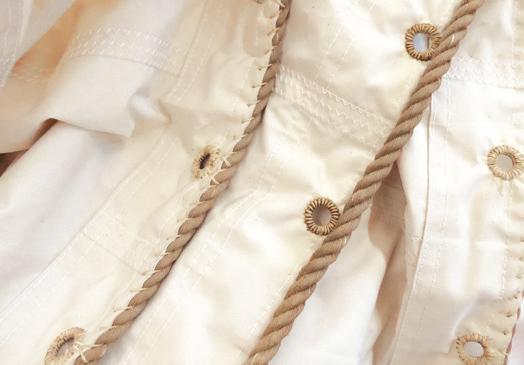
Latell co-owner Justin Ailsworth is a lifelong sailor from a family of sailors. From riding along with his parents as a baby through acting as captain of the varsity sailing team in college, his life has been dedicated to maritime sport, leisure and, now, history. After college graduation, while still considering his career options, his sailing coach offered him a job in a sail loft. He ended up sticking with it, getting a job in another sail loft in his hometown, where he is now a partner and co-owner of the business.
Ailsworth’s team makes plenty of modern sails, which he says they make with relatively advanced software.
“We take the measurements and put it into a design program,” Ailsworth said. “There’s a 3D shape where we adjust the look and then it goes to a cut file. From the cutting table, the lines are printed and then we seam the sail together in the sail loft.”
For a traditional sail such as the those on the Mayflower II, Ailsworth said the sail pieces are so large that he and Jake Pender, a historic sail specialist at Latell who also worked on the Mayflower II project, have to lay them out on a gymnasium floor, measuring and cutting by hand. Perhaps surprisingly, Ailsworth noted that measuring and cutting by hand yields a higher efficiency of fabric usage, which he suggests would have been important for a sailmaker in the 1600s because materials were scarcer and more expensive.
From their respective locations, Ward and Ailsworth made much of the sails through hand measurement and finishes, including the grommet holes.
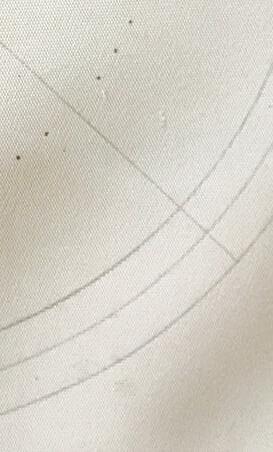
“Metal was precious at this time in history, so there’s no hardware involved in any of the sail work,” Ward said. “The sails consist of twine, thread, sailcloth and rope-based grommets instead of steel rings. We hand sew all the grommets, and then rope is hand sewn to the edges, which creates a sort of skeleton to provide the structure of the sail.”
To put it in perspective, Ailsworth compares a rope grommet to the metal grommet of a modern racing sail: In a traditional sail, one grommet may take 15 minutes per grommet, whereas one grommet in a racing sail takes only about two minutes. There is a grommet located every 20 inches along the head of the sail. While it’s considerably more time consuming, both sailmakers agree there is something satisfying about the process.
“It is what it is with a metal one,” Ailsworth said. “But for a traditional sail, it’s a direct result of your work and so much more about the craft and handwork.”
Ward echoes Ailsworth’s sentiment, adding her appreciation for the beauty and function of old-world craftsmanship and the importance of making things that last for a long time. She jokes that durability is something she loves about the Oceanus fabric but that she imagines the manufacturer must be annoyed by how rarely the sails need to be replaced. Ultimately, restoring historic ships and using aesthetically accurate sails is a labor of love, not one of mass production.
“Real-life historical interpretations can be so much more effective than textbooks for many people,” Ward said. “Keeping these skills and the history alive is important.”
For more information on sailcloth applications, contact Kirk Fitzsimmons, director of industrial manufacturing, at kfitzsimmons@glenraven.com.
